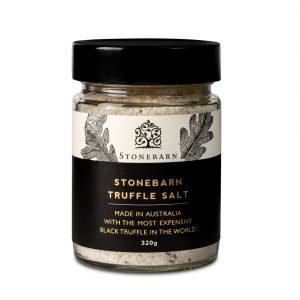Food labelling plays a pivotal role in bridging the informational gap between producers and consumers in Australia. It offers a transparent glimpse into the content, origin, and nutritional values of everyday food products, ensuring consumers make informed decisions. This article provides an overview of the labelling requirements for food products, and for custom food packaging, in Australia.
Role of Food Standards Australia New Zealand (FSANZ)
FSANZ is the regulatory body responsible for setting and maintaining food labelling standards in both Australia and New Zealand. Their guidelines ensure that consumers have access to the necessary information to make informed choices.
Importance for consumers and manufacturers
For consumers, labels provide insights into the food’s quality, safety, and authenticity. For manufacturers, correct labelling is not only a legal obligation but a means to build trust and credibility with consumers.
H2 Australian Food Standards Code: Resource for Food Labels Packaging
Purpose and Development
The code serves as a comprehensive guideline, ensuring food sold in Australia and New Zealand meets high standards of safety, quality, and information.
Key requirements of the Food Standards Code
The code encompasses aspects like food production processes, food additives, and mandatory labelling requirements, ensuring both safety and transparency.
H2 Mandatory Requirements for Food Labelling
Consult Australia’s official food labelling legislation for more detailed information on food labelling requirements, with the information below providing a general overview.
Nutrition Information Panel
This panel showcases the nutritional profile of a product. It offers insights into energy (caloric value), protein, fats, sugars, and sodium content.
Purpose and format
To help consumers understand the nutritional value of a product. It’s typically tabulated, providing information per serving and per 100 grams/ml.
Mandatory nutrients list
Includes energy, protein, total fat, saturated fat, total carbohydrates, sugars, and sodium.
Voluntary inclusions: percentage daily intake
Some labels show how the nutrients fit into an average daily diet, aiding consumers in understanding their daily consumption.
Date Marking
Products bear ‘Best-Before’ or ‘Use-By’ dates, indicating freshness or safety.
Best-Before vs. Use-By dates
‘Best-Before’ signals quality, whereas ‘Use-By’ indicates safety. Consuming post the latter can be harmful.
Implications for sale and consumption
Items past ‘Best-Before’ can be sold but might lose freshness. Those beyond ‘Use-By’ should be discarded.
Country of Origin
Indicates where the product or its major ingredients originate, helping in tracing and authenticity.
Name and Address of Manufacturer or Importer
This allows for traceability and accountability.
Allergen Information
Importance and layout
For those with allergies, this information is life-saving. It’s typically highlighted or mentioned distinctly.
Specified allergenic ingredients
Common allergens include nuts, dairy, wheat, soy, etc.
List of Ingredients
Ingredients and compound ingredients
All ingredients, in descending order of weight. Compound ingredients (ingredients within ingredients) are also listed.
Identification of the ‘Lot’ Number
Helps in product recalls and tracing back to production batches.
Product Name
Clarity and true nature of the product
The name should reflect the true nature of the product, without misleading consumers.
H2 Voluntary Inclusions: Beyond Mandatory Requirements
Nutrition and Health Claims
Criteria and legal considerations
Claims like ‘low fat’ or ‘high fibre’ must meet specific FSANZ criteria.
Sustainable Packaging Information
Australasian Recycling Label program
This initiative guides consumers on disposal practices, ensuring better recycling rates.
Recycling logos and their significance
These logos indicate the recyclability of the package, promoting sustainable choices.
Barcodes
Benefits and recommendation sources
Barcodes streamline the sales process and inventory management. GS1 provides guidance on achieving compliant barcodes.
H2 Food Labelling Special Cases & Exemptions
Foods not requiring a label
Some foods, like those sold directly by farmers, may be exempt from labelling.
Obligation to provide certain information even for exempt foods
Even exempted foods must meet certain safety and quality standards.
Elevate Your Brand with Myerton Packaging’s Premium Custom Labels
At Myerton Packaging, we take pride in producing custom biodegradable labels and compostable labels for businesses not only in Australia but across the globe. Our extensive clientele spans various industries, including retail, gourmet foods, wineries, beverages, bakeries, and skincare. With years of experience and unwavering expertise, we specialize in crafting bespoke labels that precisely align with your specifications, carrying your unique brand messages. Plus, we sweeten the deal with free shipping to major metro areas in Adelaide, Brisbane, Melbourne, Perth, and Sydney.

Biodegradable Labels
Source: Myerton Packaging
Myerton Packaging Pioneers Innovation in Labels and Stickers
Our commitment to excellence extends beyond just delivering high-quality custom labels and stickers; we’re pioneers in the industry. We’re dedicated to serving the Australian market with an array of premium and personalized labeling solutions. Staying at the forefront of design and technology trends, we’ve introduced cutting-edge machines like the HP Indigo WS6600 and WS6800, considered the most advanced label printing equipment globally. This investment empowers us to achieve unparalleled print fidelity and consistency for your labels.

Forest Film™ labels
Source: Myerton Packaging
Sustainability Meets Superior Labeling
At Myerton Packaging, sustainability isn’t just a buzzword; it’s a commitment we uphold. We’re on a mission to source the planet’s most sustainable materials and transform them into eco-friendly labels and stickers. Our range includes biodegradable labels, Forest Film™ labels, and recycled labels, giving businesses the choice to embrace sustainable packaging without compromising on quality or aesthetics.
